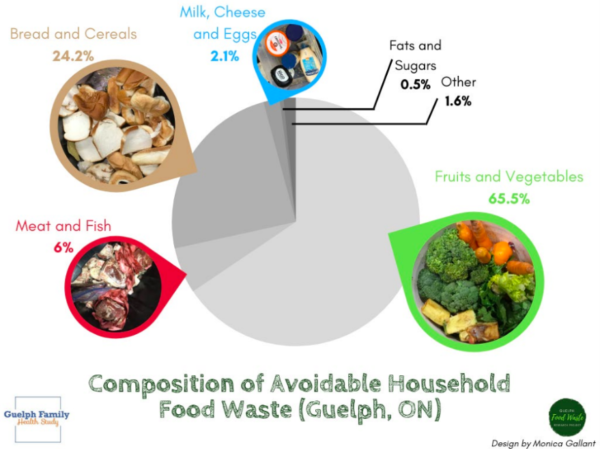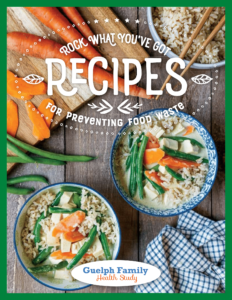
Image Source: Shutterstock
Addressing food waste at home is a priority issue for the National Zero Waste Council. Did you know that Canadian households waste more food than they realize?
Think for a moment – What foods do you throw away most often? Fruits & Veggies? or Milk? or Meat? or Cereals? If you said ‘fruit and veggies’ you’re not alone! So much is wasted each year! Recent research in Canada tells us that almost two thirds of food scraps that end up as kitchen waste could have been eaten. (National Zero Waste Council 2017)
The good news is that there are many things you can do help ensure that the energy, water, and land resources that go into growing our food are not wasted. Here are 5 tips to help you save your food, money and reduce waste:
- Think differently about food waste
Because fruit and vegetables have the highest rate of waste, think differently about the food you would usually toss out. How can you use up the broccoli stems, cilantro stems, and maybe even banana peels in recipes that taste great and reduce waste? Use all the edible parts of produce – leaves, peels, seeds, stalks and stems. For some creative and fresh ideas, check out a new IKEA cookbook filled with recipes that use kitchen scraps. - Make sustainable food decisions
Caring for the environment is everyone’s responsibility. Consider ways you can bring food to your table while protecting some natural resources. Can you build a healthy relationship with food, and value its origin and quality? Can you buy foods with less packaging or recyclable packaging when possible? Learn more about making impactful choices from credible sources like Dietitians of Canada , 2020, Advocacy /Priority Issues and Actions/ Food and Nutrition Policy and Health Canada 2021, Health Canada Departmental Sustainable Development Strategy. - Talk to farmers
Take a moment to remember farmers who work to produce our food every day. If you get a chance, talk to farmers at farmers’ markets or farm stands to discover more about the food they produce and how they manage resources and care for their environment. Farmers can tell you the story behind the foods they grow. Take a farm tour either virtually or in person to meet the farmers and see things first hand. Be curious and open minded – you’ll be amazed at how much you’ll learn to support your informed and confident food choices. In the meantime if you’d like to discover more about Canadian food and farming stories check out Canadian Food Focus at https://canadianfoodfocus.org/about-us/ where we share our food and nutrition blogs. - Plan out your meals
Buy and eat the amount of food that you need to help reduce waste. Resist the urge to overbuy fresh produce because it’s the food that’s most likely to get tossed. Plan a weekly ‘Must-Go’ meal that cleans out your fridge. In a recent study by Hellmann’s, food waste was reduced by one- third when participants planned just one weekly meal that used up soon-to-expire ingredients. In your meal plan you can also use perishable foods and leftovers to create ‘planned over’ meals. Cook and eat once then create an entirely different second meal with the same ingredients for your next meal or two. For some quick and tasty examples of “cook once, eat twice” recipes that will help you reduce food waste, check out the Guelph Family Health Study’s cookbook: Rock What You’ve Got Recipes for Preventing Food Waste. - Minimize wasted food at your table
Serve sensible, smaller portions. This way, you’re not scraping uneaten food into the waste bin or encouraging overconsumption as a way to reduce food waste. Alternatively, consider serving food family style where everyone can serve themselves and take the amount they wish to eat. If you cooked too much food you can repurpose it or freeze leftovers for another meal.
Let’s reduce food waste together! Contact us to discover more! We also offer virtual workshops and cooking demos on how to minimize food waste at your organization and your family table.


